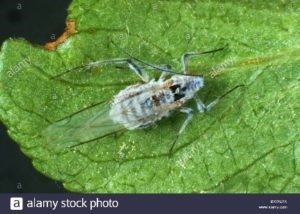by Robert Bowling, Assistant Professor and Extension Specialist IPM; Robert.Bowling@ag.tamu.edu
How will the recent rain effect the sugarcane aphid on south Texas sorghum? That remains to be seen but, in the past three years it seems that the sugarcane aphid populations have collapsed about 10 to 14 days following major rain events. For most, the recent rain was less than an inch although some folks had over 3 inches of rain. Higher relative humidity coupled with lower temperatures certainly mean the environmental conditions are favorable for an epizootic. There is no shortage of sugarcane aphid on sorghum around the area. The one unknown is whether fungal spores are at the necessary concentration are in contact with the aphid. It is something I will be watching over the coming days.
As a side-note, I will be hosting a graduate student from Mexico starting in mid-August through October. She is working toward a Master’s degree and her thesis project is fungal pathogens of sugarcane aphid. She will identify field collected diseased aphids and identifying pathogens (entomopathogens and saprophytes). If you suspect entomopathogens in sugarcane aphid colonies and would like a confirmation please place specimens in ethanol and send them to me. Please include collection information (location, date, collector, and GPS coordinates would be nice).
How are insecticides performing against sugarcane aphid? Transform and Sivanto are performing up to expectations. I have seen these products perform above and beyond expectations where field edges were heavily infested by sugarcane aphid (aphid populations averaging 5,000 to 10,000 per plant). These field edges were, for the most part, devoid of sugarcane aphid two weeks following insecticide applications.
Are there any watch-outs for applications? I have had several consultants tell me that large aphid populations could be found on the bottom leaves of sorghum a couple of days following an insecticide treatment (either Sivanto or Transform). The common theme around these observations was dense canopies either associated with the hybrid and/or narrow row spacing. Both insecticides must come in contact with all leaves to be effective. In all cases the final volume (10 GPA or less) was not adequate to penetrate the canopy. Prior to treating sorghum for sugarcane aphid assess the canopy and consider row spacing to determine total volume necessary to penetrate the canopy. If the field is on narrow rows or the hybrid has produced a dense canopy use no less than a final volume of 15 gpa, lowering the spray boom as much as possible, and consider increasing the pressure. Research from 2016 showed hollow cone nozzles offer better penetration through the canopy compared with other nozzles when higher spray volumes are used. If hollow cone nozzles are on the boom already it is suggested that they would be preferred over other nozzles to gain the penetration needed to reach the lower canopy.
How are the sugarcane aphid tolerant hybrids performing against sugarcane aphid? I have heard that some fields planted to sugarcane aphid tolerant hybrids have been sprayed for sugarcane aphid. It seems like a lot of these instances were hybrids with “moderate tolerance” to sugarcane aphid and not those classified as “highly tolerant to sugarcane aphid. Large populations of sugarcane aphid are present on a field housing a strip trial of ~30 sorghum hybrids. I counted aphids in several of the hybrids and the “highly tolerant” hybrids were nowhere close to reaching threshold levels for sugarcane aphid while the two hybrids that were either moderately tolerant or susceptible had exceeded the threshold (see Table 1). I was in this field earlier in the week and the “highly tolerant” hybrids have yet to reach the economic threshold wilt the moderately resistant and susceptible hybrids are being killed by the aphid. It is a very impressive look at performance of these sorghum hybrids exposed to heavy aphid infestations. In several instances sorghum hybrids “highly tolerant” to sugarcane aphid had very few to no aphids while neighboring plants of susceptible hybrids were being killed by huge aphid populations. As always, treat all sorghum as though it is susceptible to sugarcane aphid (i.e. scout all fields for sugarcane aphid) but the sorghum “highly tolerant” to sugarcane aphid look very impressive against the aphid.
Table 1. Sorghum Hybrid Evaluations for Sugarcane Aphid Resistance Aq ua Dulce, Tx.
ua Dulce, Tx.
For more information on the sugarcane aphid and other field crops topics, check out our new website at: http://betteryield.agrilife.org/

Randy Bowling
Assistant Professor and Extension Specialist, College Station, TX robert.bowling@ag.tamu.edu
